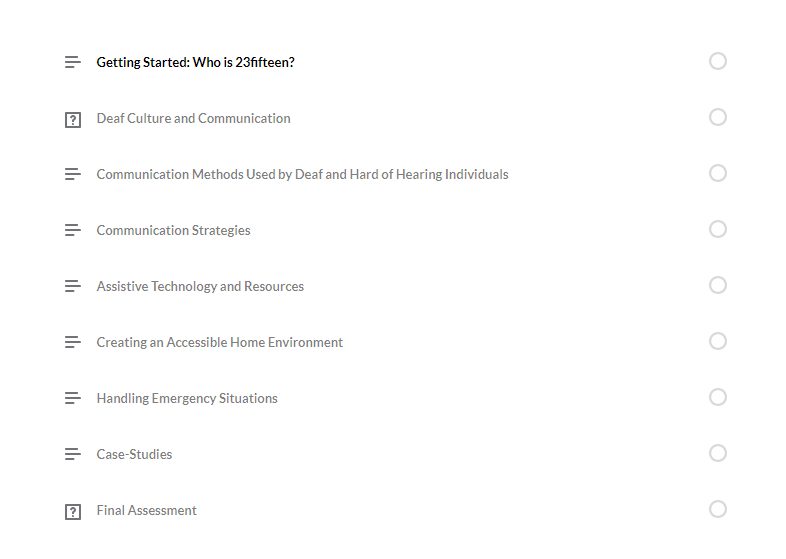DSPs Working with Deaf and Hard of Hearing Individuals
I designed this eLearning course for direct support professionals with little to no experience caring for individuals who are deaf or hard of hearing.
Audience: Direct support professionals working in a home health care facility
Responsibilities: eLearning development, AI tools, storyboarding, instructional design document creation, ADDIE
Tools Used: Articulate Rise 360, ChatGPT
The Problem
In general, our world is not disability-friendly. Many individuals who have physicals or mental disabilities have difficulty advocating for themselves for various reasons including fear of ridicule or fear of being an “inconvenience.” In the home healthcare world, it is imperative for direct support professionals to put in the work ahead of time to make sure that all clients, even those with hearing disabilities, are cared for in the way they need and deserve.
The Solution
When a California home healthcare company reached out to me for a course meant to help with this problem, I was eager to get to work on this project. I knew that I would need help from external sources to make sure that I had all of the information needed to make the course as informative as possible. Using AI tools, I was able to map out the course and create in half of the time it would take me to map out a course normally.
My Process
I started the ADDIE framework in order to begin the process of creating this course. First, I identified the primary learning goal and my target audience. Going into this project, I made the assumption that the direct support professionals that would be taking this course would be familiar with general care for individuals with cognitive and mental disabilities. However, adding hearing impairments into the equation created an entire new element that would change many of the ways that these clients could be cared for.
I used ChatGPT, an AI tool, to draft a course outline for me. I found that ChatGPT was extremely beneficial for making sure that I covered all of the cases I needed covered to make a thorough course. I then moved forward into creating a detailed design plan. I knew that I wanted plenty of scenario-based learning and I wanted to give course participants a base-level understanding of ASL (American Sign Language) and non-verbal communication.
I dove right into research. I found videos, informational gifs, links to ASL websites and more that I have placed throughout the course. The various forms of media and types of lessons make this course ideal for all types of learners. A pre-test at the beginning of the course, following by a final assessment at the end of course allow participants to really test their knowledge before applying that knowledge in real life.
Takeaways
My biggest takeaway from this project is AI tools can be an incredible tool for instructional designers. I was able to ask ChatGPT not only for a course outline, but also for lesson outlines. If I needed a section of the course to take five minutes, I would ask ChatGPT for the best way to shorten a bit a content to fit in that specific time frame.
I personally learned a lot about the inconveniences and outright discrimination that deaf or hard of hearing individuals deal with on a day-to-day basis. It made me want even more to be a voice for those who are unheard.

